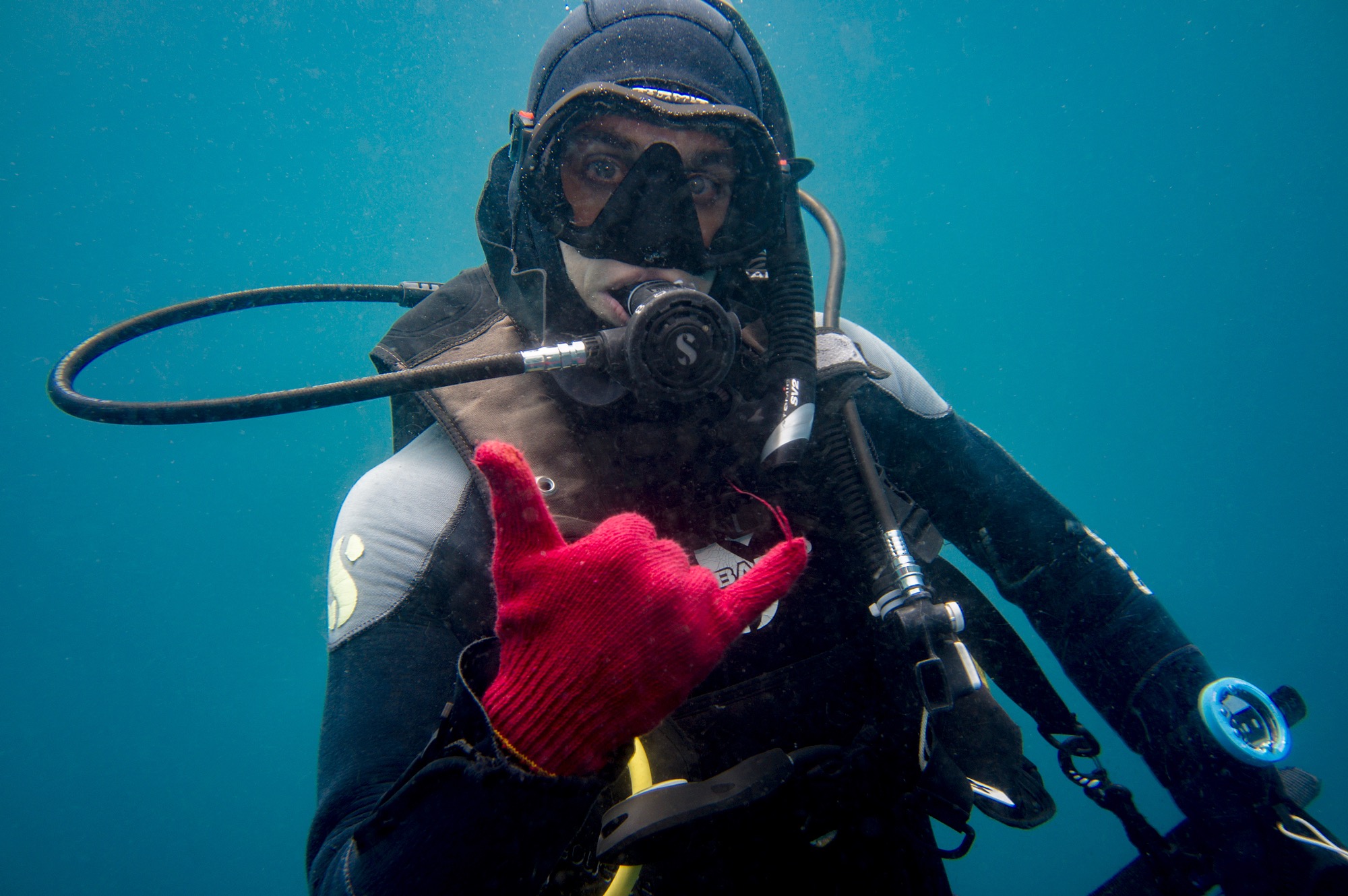Learn to scuba dive

At the beginning of 2017, I committed to obtaining my Open Water scuba certification by the end of the year.
When July rolled around, my schedule opened up a bit. I hit the web in search of a local PADI dive shop with good reviews.
The team at Blue Planet Scuba topped the list. With a quick phone call, I booked the required “confined water” (pool) lessons and paid for the eLearning component.
Fast-forward a couple of weeks into August, and I was ready to get fitted for my wetsuit and BCD.
The Blue Planet dive shop was located in the heart of the District – just northeast of Dupont Circle. After trying on wetsuits, I purchased a basic gear package – mask, snorkel, fins – and took a final written assessment.
Around 8:30 AM the next Saturday, I arrived at the Gallaudet University pool. The instruction lasted until 4:30-5:00 PM and continued with the same schedule on Sunday. It was a blast. The Blue Planet staff were professional and left me feeling confident in my training.
Next up were my Open Water checkout dives. I decided to knock these out as soon as possible to reinforce my new skills.
To save some money and finish both my Open Water and Advanced certifications on the same trip, I scheduled my checkout dives for Labor Day weekend at Dutch Springs. The Pennsylvania spring water was as cold as you might expect in September. During my early morning deep dive, we passed through a few spots that were 54 degrees. Even wearing a 7mm wetsuit with gloves and a hood, I was pretty chilled.
Perhaps the most challenging portion of my Advanced course was the navigation “adventure” dive. The visibility during my nav dive was about six feet. As my buddy and I left the submerged platform at 40 feet, we took turns using a compass. The buddy without the compass kept watch on the depth and signaled if we needed to ascend or descend a few feet.
Ten kick cycles away from the platform, we made a 90 degree turn, followed by another ten kick cycles. Then we made a second 90 degree turn.
To our relief, the submerged platform reappeared ahead of us on both attempts.
With Open Water and Advanced certifications in hand, I established a pair of new goals – dive in the Galápagos and the Red Sea. I had read that these were among the best locations to dive in the world.
Before the end of October, I exchanged my credit card points for a flight to the Galápagos two days after Christmas. Also joining for the trip was my film school buddy, Joe, who photographed glacial ice caves with me in 2016.
Not to let November go to waste, I made the call to squeeze in a couple more training dives and pick up my PADI Freediver certification.
Over the course of a long weekend, I flew south to Tampa and drove up to the Blue Grotto in Ocala. While staying at the spring, I completed my Freediver and peak water buoyancy (PWB) scuba certifications.
The PWB speciality class consisted of two dives inside a cavern with an instructor. Challenges I was tasked with demonstrating included taking off my mask while hovering and not ascending or descending more than one meter and navigating through narrow, inky black cavern passageways while properly trimmed from 40ft to 90ft and back.
Following the action-packed weekend in Florida, I traveled once again to the Blue Planet shop for a Nitrox certification class. Thus concluded my 2017 dive training.